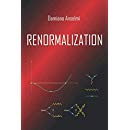Regularization
I formulate a deformation of the dimensional-regularization technique that is useful for theories where the common dimensional regularization does not apply. The Dirac algebra is not dimensionally continued, to avoid inconsistencies with the trace of an odd product of gamma matrices in odd dimensions. The regularization is completed with an evanescent higher-derivative deformation, which proves to be efficient in practical computations. This technique is particularly convenient in three dimensions for Chern-Simons gauge fields, two-component fermions and four-fermion models in the large N limit, eventually coupled with quantum gravity. Differently from even dimensions, in odd dimensions it is not always possible to have propagators with fully Lorentz invariant denominators. The main features of the deformed technique are illustrated in a set of sample calculations. The regularization is universal, local, manifestly gauge-invariant and Lorentz invariant in the physical sector of spacetime. In flat space power-like divergences are set to zero by default. Infinitely many evanescent operators are automatically dropped.
Int.J.Mod.Phys. A20 (2005) 1389-1418 | DOI: 10.1142/S0217751X0501983X
arXiv:hep-th/0404053
In flat space, $\gamma_5$ and the epsilon tensor break the dimensionally continued Lorentz symmetry, but propagators have fully Lorentz invariant denominators. When the Standard Model is coupled with quantum gravity $\gamma_5$ breaks the continued local Lorentz symmetry. I show how to deform the Einstein lagrangian and gauge-fix the residual local Lorentz symmetry so that the propagators of the graviton, the ghosts and the BRST auxiliary fields have fully Lorentz invariant denominators. This makes the calculation of Feynman diagrams more efficient.
Phys. Lett. B 596 (2004) 90 | DOI: 10.1016/j.physletb.2004.06.089
arXiv:hep-th/0404032
We study a regularization of the Pauli-Villars kind of the one loop gravitational divergences in any dimension. The Pauli-Villars fields are massive particles coupled to gravity in a covariant and nonminimal way, namely one real tensor and one complex vector. The gauge is fixed by means of the unusual gauge-fixing that gives the same effective action as in the context of the background field method. Indeed, with the background field method it is simple to see that the regularization effectively works. On the other hand, we show that in the usual formalism (non background) the regularization cannot work with each gauge-fixing.In particular, it does not work with the usual one. Moreover, we show that, under a suitable choice of the Pauli-Villars coefficients, the terms divergent in the Pauli-Villars masses can be corrected by the Pauli-Villars fields themselves. In dimension four, there is no need to add counterterms quadratic in the curvature tensor to the Einstein action (which would be equivalent to the introduction of new coupling constants). The technique also works when matter is coupled to gravity. We discuss the possible consequences of this approach, in particular the renormalization of Newton’s coupling constant and the appearance of two parameters in the effective action, that seem to have physical implications.
Phys.Rev. D48 (1993) 5751-5763 | DOI: 10.1103/PhysRevD.48.5751

 Quantum Gravity
Quantum Gravity 


